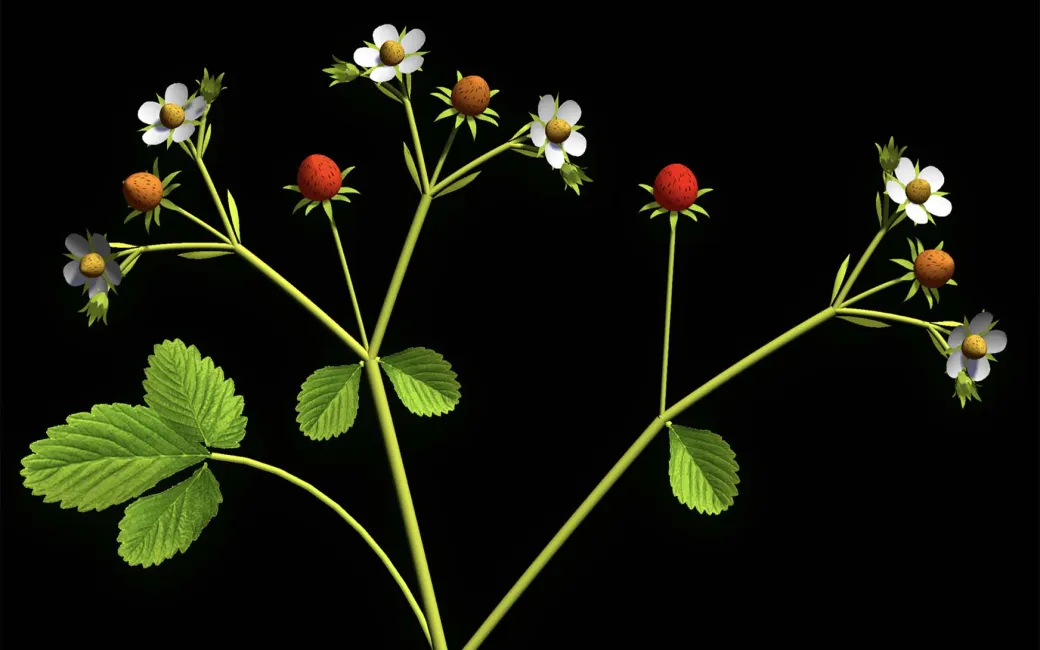
Woodland strawberry is a familiar plant for most of us in Finland. It is also a very convenient model plant for biological research – it is easy to cultivate in greenhouses, and its small genome is fully known. Researchers at the Department of Agricultural Sciences, University of Helsinki, have focused on exploring the genetic mechanisms that regulate inflorescence architecture in woodland strawberry. With the help of transgenic strawberry plants, they have identified gene functions that affect the complexity of inflorescences.
“Our aim is to understand the mechanisms behind the diversity of plant structures and forms in nature. In this research, we explored how the level of branching varies in strawberry inflorescences and consequently affects the berry yield of the plant,” says Professor Timo Hytönen, the corresponding author of the study.
Researchers demonstrated how strawberry inflorescence development is dictated by the small growing points, called meristems. Strawberry meristems, located at the tips of the shoots, may either terminate into a flower or produce new meristems to form a branch. The timing of these events affects the branching iterations, the final number of flowers, and eventually the number of berries in the inflorescences.
Interestingly, strawberry inflorescences combine two branching systems – a monopodial primary axis and sympodial lateral branches – and are botanically known as thyrses. The development of thyrse architecture has not been previously explored in any other plant.
“Firstly, our discovery shows how the thyrse architecture in strawberry emerges from geometrically distinct meristems, and secondly, we provide molecular data showing how two antagonistically functioning genes regulate the fate of these meristems,” explains doctoral researcher Sergei Lembinen.
In collaboration with computer scientists at the University of Calgary, the molecular data was integrated into a computational model to create virtual strawberry plants. Together with experimental data, the model helps us to understand the complex interactions and mechanisms that affect inflorescence architecture. The model explains and captures the extensive variability of inflorescence architectures in strawberry, documented by the botanist George McMillan Darrow almost a century ago.
“By exploring the diversity of plant species, and the specific features in their development, we gain a basic understanding of how genetic mechanisms governing plant development have been modified during evolution. Moreover, this research provides us with tools for genomics-based plant breeding in the genetically more complex cultivated strawberry,” summarizes Professor Hytönen.

